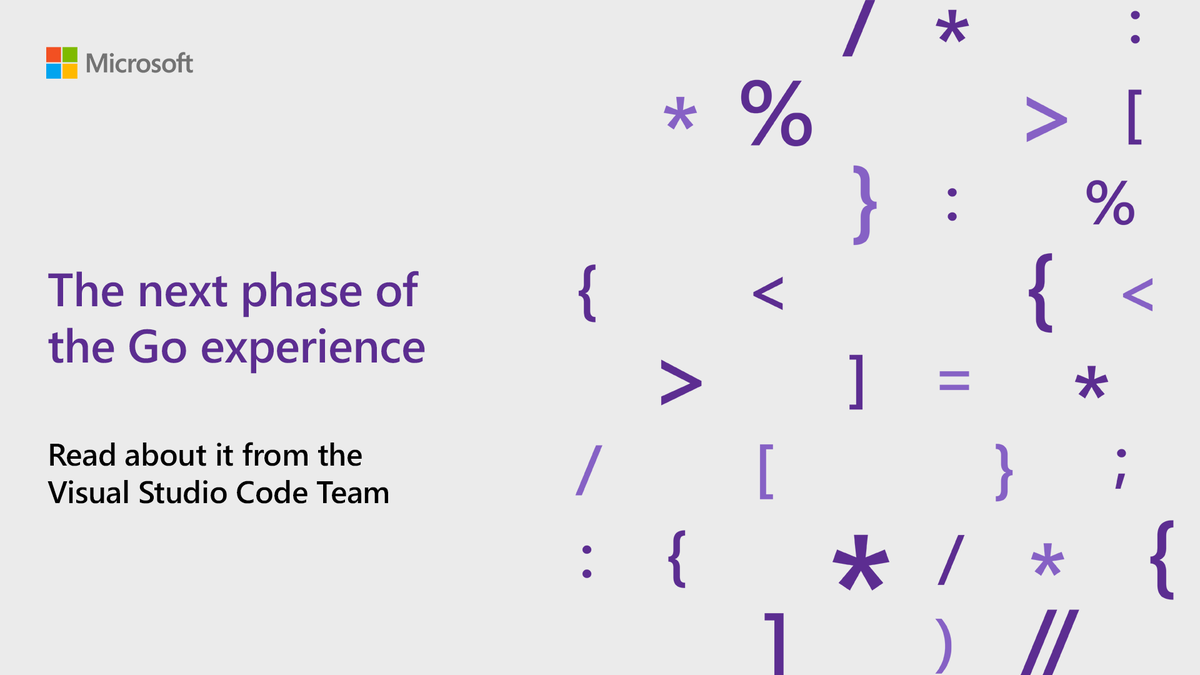I’ve been using VS Code for my Golang development needs for a few months now. Minor kinks here and there, nothing serious, and the development experience gets better with every update. I have also tried out IntelliJ Idea as the editor, and one feature that I’m missing in Code from Idea is the build-run-reload process. I thought to myself, that’s such a basic feature, it should be possible to have that.
And it is! VS Code Tasks to the rescue!
These tasks allow us to run different kind of tools and, well, tasks inside VS Code.
Go to Tasks -> Configure Default Build Task and then select the “Create tasks.json file from template” in the little pop-up window, and after that select the “Others” option. This tasks.json file will live inside the .vscode directory.


Like Visual Studio Code and Goland, this code editor checks your Golang syntax while you write code. Over and above its Go-specific functionality, Sublime Text offers other general code editing features that help software developers improve their output efficiency. Visual Studio Code is a great polyglot editor that combines a clean, highly configurable, editing interface with an extensive ecosystem of plugins that provide support for a wide variety of programming languages and file types. Developers who already use VS Code for software development can leverage their skill to program in Go as well. Jun 09, 2020 Both the Go and Visual Studio Code teams recognize the importance of Visual Studio Code to the Go community and believe strongly in an open tooling ecosystem for Go developers. Even as the extension graduates to be part of the Go project, the VS Code team will continue to work together with the rest of the Go project and the community to. To enable Golang support you need to install extension “Go”. Launch VS Code by double clicking the VS Code icon on the desktop. Press Ctrl + Shift + x or click the last icon on the left vertical. Coming from Visual Studio LiteIDE feels like home. Conf F7 to build and run the app inside LiteIDE, I don't want random terminals laying around and configuring watchers to see when I save a file as reboot my app. That being said, on my work related VS things, I never run the app inside VS:) It does have bugs and annoyances.
For my overcomplicated d20 roller, which is my first website built with Golang, I have the following content for the tasks:
What this one task does is that it runs go build to build the project and then runs the generated executable, which for this project is d20.
I guess providing a standardized name to go build with the -o flag this could be made more portable so that the command part reads something like go build -o proj && ./proj, but I’m ok with this for now.
And now just type Ctrl+Shift+b and Code will execute this “Build and run” task for us! Hooray! The terminal window in Code will pop-up saying something like:

By going to http://localhost:8080 I can see that my little website is up and running. Cool.
But if we want to restart this taks, running Ctrl+Shift+b again won’t work and Code will complain that the “Task is already active blablabla…'.
Looking at the Tasks menu, we can see that there’s a “Restart running task…” menu entry. Clicking that, it pops up a window with a list of running tasks. In this case there’s only one, our “Build and run” task. Clicking through the menu every time would be boring, so let’s add a keyboard shortcut for it.
Go to File -> Preferences -> Keyboard shortcuts (or just hit Ctrl+k Ctrl+s), search for “Restart running task” keybinding, and set it to whatever you like. I’ve set it to Ctrl+Alt+r.
Finally, the flow is Ctrl+Shift+b to start the taks for the very first time, code-code-code, Ctrl+Alt+r to re-build. Sweet. Now the only annoying bit is that I have to pick out that one running task from the list of running tasks when restarting, but I can live with that. For now.
Happy hackin’!
Today we are announcing the release of Visual Studio for Mac version 7.6. Our focus with this release has been to improve product reliability in various areas, with a special focus on the code editing experience. We have also made several fixes that improve IDE performance. Finally, we’ve extended our support for Azure functions with the addition of new templates and the ability to publish your function to Azure from within the IDE.
- Click the button to download the latest version of Visual Studio 2017 for Mac. For instructions on setup and install, see the Setup and Install Visual Studio for Mac documentation. To learn more about Visual Studio 2017 for Mac, see Mac System Requirements and Mac Platform Targeting.
- Go in Visual Studio Code. Using the Go extension for Visual Studio Code, you get language features like IntelliSense, code navigation, symbol search, bracket matching, snippets and many more that will help you in Golang development.
- Persistent performance and reliability issues in the Visual Studio for Mac IDE will be addressed by replacing most of the editor internals with code from the Visual Studio Code editor. That news comes in a blog post today (Oct. 16) announcing Visual Studio for Mac 2019 and a new roadmap.

This post highlights the major improvements in this release. To see the complete list of changes, check out the Visual Studio for Mac version 7.6 Release Notes. You can get started by downloading the new release or updating your existing install to the latest build available in the Stable channel.
How to use Delve debugger in Visual Studio Code. Ask Question. Up vote 11 down vote favorite. For using Delve debugger in Visual Studio Code with Golang, do the following steps. Check out this bug of vscode-go, it is affecting both MAC OS and Linux, as of October.
Visual Studio For Golang Professional
Improving reliability of the Code Editor
We’ve focused our attention on improving the reliability of the code editor in Visual Studio for Mac and have addressed several issues with the code editor. In particular, we want to highlight the following fixes to issues many of you have reported:
- We fixed an issue where Quick Fix menu items don’t display if source analysis is disabled.
- We also addressed a widely reported issue where tooltips wouldn’t disappear.
- We fixed an issue where IntelliSense seems to fail, resulting in red “squiggles” continuing to hang around in the editor even though there were no errors.
- We improved IntelliSense for F# developers. There was an issue where you could not use “.” for autocompletion, but we’ve fixed this and various other F# IntelliSense issues.
- We made improvements to JavaScript syntax highlighting.
Improving performance of the IDE
Visual Studio Code For Golang
One of the top reported bugs in previous releases has been performance issues in the editor. Having a fast and reliable code editor is a fundamental part of any IDE and an important part of any developer’s workflow, so we’ve made some improvements in this area:
- We improved tag-based classification for C# with PR #4740 by reusing existing Visual Studio for Windows code, which should improve typing performance in the editor.
- We now support no-op restore of NuGet packages when opening a solution. This change speeds up NuGet restores on solution load.
We’ve also added many more small fixes that improve startup time and reduce memory consumption of the IDE.
Richer support for Azure Functions
Azure functions are a great way to quickly get up and running with a serverless function in just a few minutes. With this release, we have introduced new templates for you to choose from when creating your Azure Functions project:
These new templates allow you to configure access rights, connection strings, and any other binding properties that are required to configure the function. For information on selecting a template, refer to the Available function templates guide.
Another major part of the Azure functions workflow that we are introducing with this release is publishing of functions from Visual Studio for Mac to the Azure Portal. To publish a function, simply right-click on the project name and select Publish > Publish to Azure. You’ll then be able to publish to an existing Azure App Service or use the publishing wizard to create a new one:
For information on publishing to Azure from Visual Studio for Mac, see the Publishing to Azure guide.
Share your Feedback
Visual Studio Golang Support
Visual Studio For Golang Free
Addressing reliability and performance issues in Visual Studio for Mac remains our top priority. Your feedback is extremely important to us and helps us prioritize the issues that are most impacting your workflow. There are several ways that you can reach out to us:
Visual Studio 2017 Golang Support
Visual Studio For Golang File

Visual Studio Golang Tutorial
- Use the Report a Problem tool in Visual Studio for Mac.
- We are enhancing the Report a Problem experience by allowing you to report a problem without leaving the IDE. You’ll have the ability to automatically include additional information, such as crash logs, that will help our Engineering team narrow down the root cause of your report more effectively. This will be introduced in an upcoming servicing release to 7.6 that will be available in the Stable channel within the next few weeks.
- You can track your issues on the Visual Studio Developer Community portal where you can ask questions and find answers.
- In addition to filing issues, you can also add your vote or comment on existing issues. This helps us assess the impact of the issue.
Comments are closed.